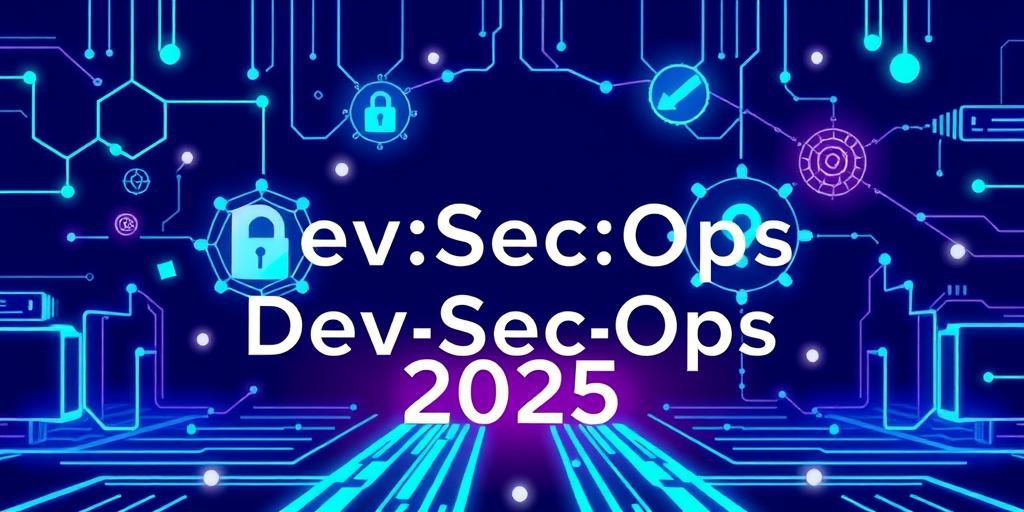DevSecOps: Integrating Security Throughout the Development Lifecycle (2025)
In today’s rapidly evolving technological landscape, the integration of security into every phase of the software development lifecycle (SDLC) has become not just an option, but a necessity. DevSecOps, a paradigm shift from traditional development methodologies, embodies this principle by embedding security practices seamlessly within DevOps workflows. This approach ensures that security is a shared responsibility from the initial stages of development to deployment and beyond.
Understanding DevSecOps
DevSecOps represents the convergence of development, security, and operations. Unlike traditional models where security is often an afterthought, DevSecOps promotes a culture of shared responsibility and collaboration. By integrating security practices early and continuously, organizations can identify and mitigate vulnerabilities more efficiently, reduce risks, and accelerate the delivery of secure software.
Key Principles of DevSecOps
- Shift Left: Integrating security early in the development lifecycle.
- Shared Responsibility: Ensuring all team members are accountable for security.
- Continuous Feedback: Implementing ongoing monitoring and feedback loops.
- Automation: Automating security tasks to improve efficiency and accuracy.
- Collaboration: Fostering open communication and teamwork between development, security, and operations teams.
Benefits of Implementing DevSecOps
- Enhanced Security: Proactive identification and mitigation of vulnerabilities.
- Faster Time to Market: Streamlined processes and reduced delays due to security issues.
- Improved Compliance: Automated compliance checks and reporting.
- Reduced Costs: Early detection and resolution of security flaws.
- Increased Agility: Adaptability to changing security threats and requirements.
Implementing DevSecOps in 2025
As we move into 2025, several key trends and practices will shape the implementation of DevSecOps:
-
AI-Powered Security Tools: Artificial intelligence and machine learning will play a crucial role in automating threat detection, vulnerability analysis, and incident response.
-
Cloud-Native Security: With the increasing adoption of cloud-native architectures, security solutions will be designed to integrate seamlessly with containerization, microservices, and serverless computing.
-
Policy as Code: Managing security policies through code will enable greater automation, consistency, and scalability.
-
DevSecOps Training and Education: Investing in training programs to equip development, security, and operations teams with the necessary skills and knowledge.
-
Security Orchestration and Automation (SOAR): SOAR platforms will automate and streamline security workflows, improving efficiency and response times.
Challenges in Adopting DevSecOps
Despite its numerous benefits, adopting DevSecOps can present several challenges:
- Cultural Resistance: Overcoming resistance to change and fostering a culture of shared responsibility.
- Skill Gaps: Addressing the shortage of skilled professionals in security and DevSecOps.
- Tool Integration: Ensuring seamless integration of security tools into existing development pipelines.
- Legacy Systems: Adapting DevSecOps practices to older, more traditional systems.
- Compliance Requirements: Navigating complex and evolving regulatory landscapes.
Best Practices for a Successful DevSecOps Implementation
To overcome these challenges and ensure a successful DevSecOps implementation, consider the following best practices:
- Start Small: Begin with a pilot project to demonstrate the value of DevSecOps.
- Automate Security Testing: Integrate automated security testing tools into the CI/CD pipeline.
- Implement Threat Modeling: Proactively identify and address potential threats.
- Foster Collaboration: Encourage open communication and collaboration between teams.
- Monitor and Measure: Track key metrics to measure the effectiveness of DevSecOps practices.
Conclusion
DevSecOps is transforming the way organizations approach software development by integrating security into every stage of the lifecycle. As we look to 2025, the adoption of AI-powered tools, cloud-native security, and policy as code will further enhance the effectiveness of DevSecOps practices. By addressing the challenges and implementing best practices, organizations can build more secure, resilient, and agile software systems.
